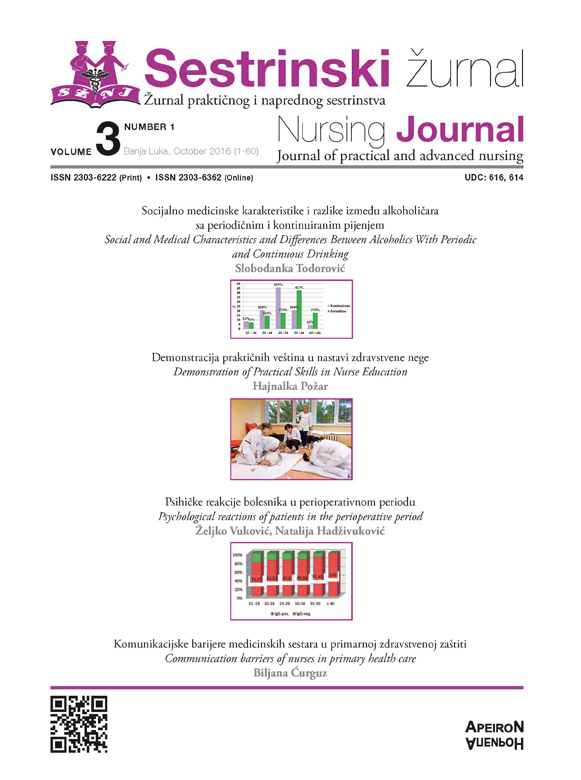Procedure zdravstvene nege pacijenta sa opekotinskom traumom / Procedures health care of the patient with burns trauma
DOI:
https://doi.org/10.7251/SEZ0116048TAbstract
The burns are tissue damage caused under the influence of pathogenic amounts of heat, chemicals, electricity or radiation of different bodies.
Etiological factors generally can be divided into four groups: thermal, chemical, electrical and radiation burns.
Tissue damage is directly related to high temperature and length of exposure to harmful agents. The higher the temperature and longer works, the damage was more severe. Etiologic agents can cause minor injuries in the form of erythema of the skin, and severe destruction of body parts or the whole organism. System changes occur and are particularly pronounced in severely burned patients. These are patients with more than 25% body surface area burned, regardless of the depth, electrical burns, subdermal burns over 10% of body surface area burned with associated lung injuries, fractures, contusions, wounds, diseases previously. The burns are the most serious violations of the organism due to the involvement of almost all organs and systems. Extensive burns are therefore called and burns disease.
The treatment of burned patients conducted team with a multidisciplinary approach. The nurse is an integral part of the team. The treatment of burns consists of first aid, general medical and surgical treatment. Prophylactic antibiotic therapy is applied in extensive burns. The main aim of local treatment of the disposal of burned area.
Nursing care of the patient with burns trauma is of particular importance for the outcome of the treatment and prevention of complications. Nursing process involves numerous and complex medical-technical intervention, such as: continuous monitoring of vital functions; daily dressing wounds, with the absolute application of the principles of aseptic techniques; taking laboratory analysis; placement of a urinary catheter connected to a closed drainage system, to be followed hour diuresis; placement central venous catheter, peripheral venous catheters; taking blood cultures and urine culture with the aim of diagnosis of septic states.

